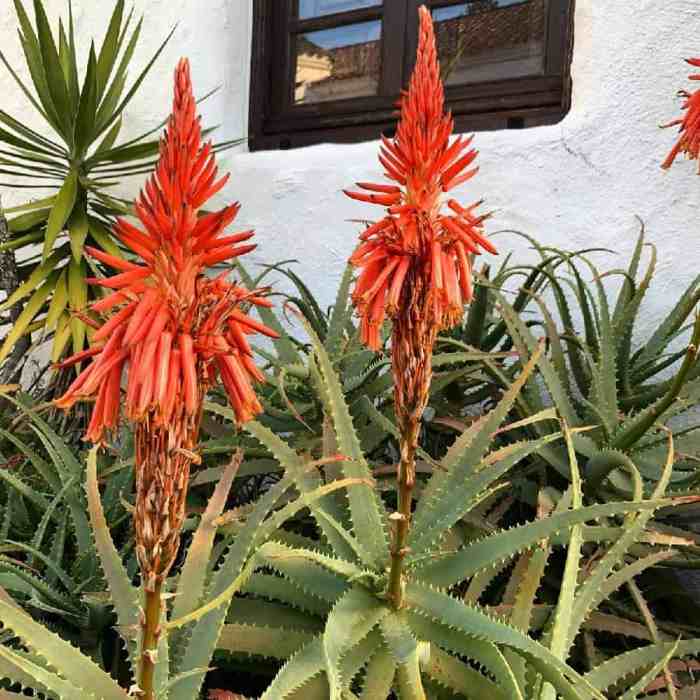Plant Selection & Characteristics: Potted Trailing Flowering Plant
Potted trailing flowering plant – The choice of a trailing flowering plant for indoor cultivation is a delicate dance between aesthetics and practicality. The ideal candidate must possess a captivating visual appeal, a manageable growth habit, and the resilience to thrive within the often-constrained environment of the home. It’s a quest for a miniature, verdant spectacle, a silent testament to the power of nature’s artistry confined within the four walls of domesticity.The successful cultivation of these miniature ecosystems demands a thorough understanding of the plant’s specific needs.
Light, water, and nutrient requirements vary considerably, making careful selection crucial for long-term success. Neglecting these nuances often leads to a wilting spectacle, a poignant reminder of nature’s unforgiving demands.
Ideal Characteristics of Potted Trailing Flowering Plants for Indoor Use
An ideal indoor trailing flowering plant exhibits a harmonious blend of aesthetic charm and practical considerations. Its cascading form should lend itself gracefully to hanging baskets or elevated planters, adding a vertical dimension to the interior landscape. The blooms should be abundant and long-lasting, providing a sustained period of visual delight. Furthermore, the plant should possess a relatively low maintenance profile, tolerating the fluctuating conditions of indoor environments without excessive demands on the caretaker’s time and attention.
Crucially, it should be adaptable to the levels of ambient light typically found in most homes. A robust immune system, resisting common indoor pests and diseases, is also highly desirable.
Popular Potted Trailing Flowering Plants
The following table details five popular choices, highlighting their unique attributes:
| Plant Name | Bloom Color | Growth Habit | Light Requirements |
|---|---|---|---|
| Trailing Begonia (Begonia x semperflorens-cultorum) | Red, Pink, White, Orange | Rapidly spreading, cascading | Bright, indirect light |
| String of Pearls (Senecio rowleyanus) | Small white flowers | Long, trailing stems with bead-like leaves | Bright, indirect light |
| Sweet Potato Vine (Ipomoea batatas) | (No significant blooms, grown for foliage) | Vigorous, rapid growth, trailing habit | Bright, indirect light |
| Fuchsia (Fuchsia x hybrida) | Red, Pink, Purple, White, Bi-color | Trailing or upright, depending on variety | Bright, indirect light |
| Million Bells (Calibrachoa) | Wide variety, including yellow, red, purple, and combinations | Densely trailing, abundant blooms | Full sun to partial shade |
Care Requirements: Succulents vs. Non-Succulents, Potted trailing flowering plant
Succulent trailing plants, like String of Pearls, differ significantly from non-succulent varieties in their water requirements. Succulents store water in their leaves and stems, making them highly drought-tolerant. Overwatering is a far greater threat to succulents than underwatering. Conversely, non-succulents like begonias require consistently moist soil, though not waterlogged. Allowing the soil to dry out slightly between waterings is generally recommended for both types, but the frequency will vary greatly depending on the specific plant, pot size, and environmental conditions.
The key is to observe the plant closely and adjust watering accordingly. Signs of underwatering include wilting leaves, while overwatering can lead to root rot and fungal diseases. Appropriate drainage is crucial for all trailing plants to prevent waterlogging.
Quick FAQs
What are some common problems with potted trailing plants?
Common issues include root rot from overwatering, pest infestations (like spider mites or mealybugs), and nutrient deficiencies leading to weak growth or lack of blooms.
How often should I repot my trailing plant?
Repotting is generally needed every 1-2 years, or when the roots become root-bound (growing out of the drainage holes).
Can I propagate trailing plants from seeds?
While some can be grown from seed, many trailing plants are more easily propagated through stem cuttings.
What should I do if my trailing plant isn’t flowering?
Lack of flowering could be due to insufficient light, improper fertilization, or incorrect watering. Review the plant’s specific light and nutrient needs.
Imagine a vibrant potted trailing flowering plant, its blossoms cascading like a miniature waterfall. For a truly breathtaking display, consider training some stems to climb, perhaps using a purple flowers climbing plant variety for a stunning contrast of colors and textures. This creates a dynamic, layered effect that elevates your potted plant from charming to captivating, a testament to the beauty of nature’s artistry.


